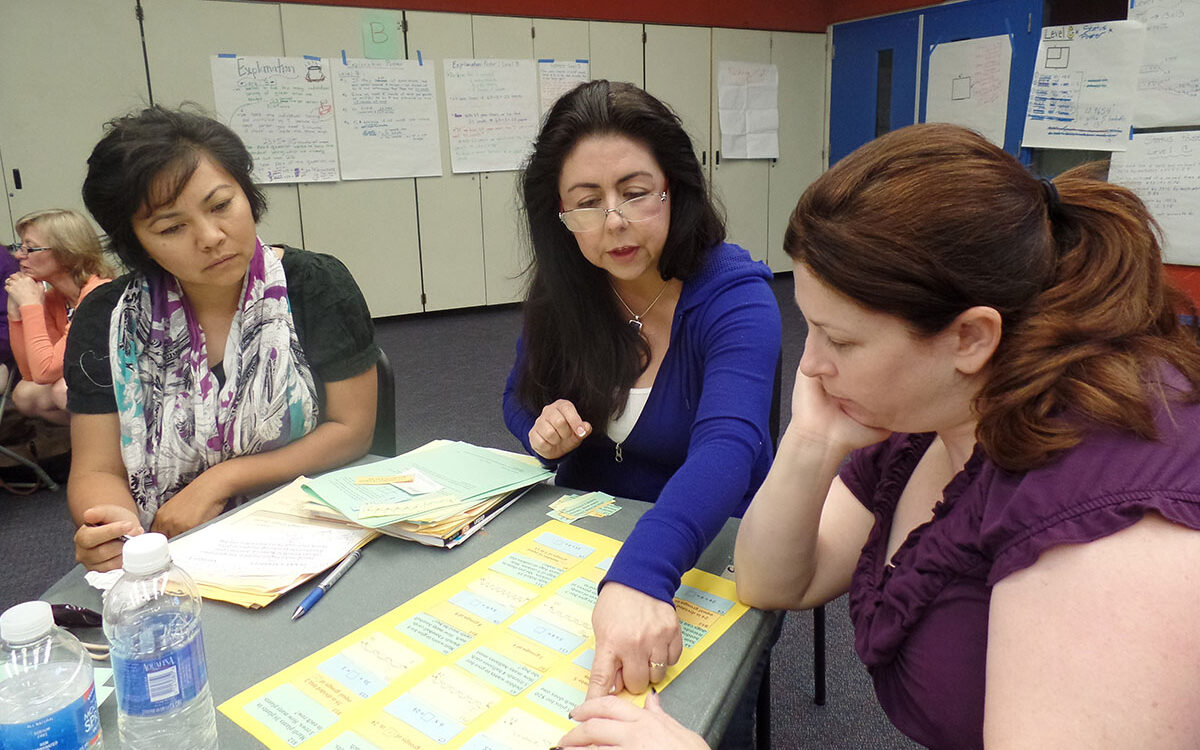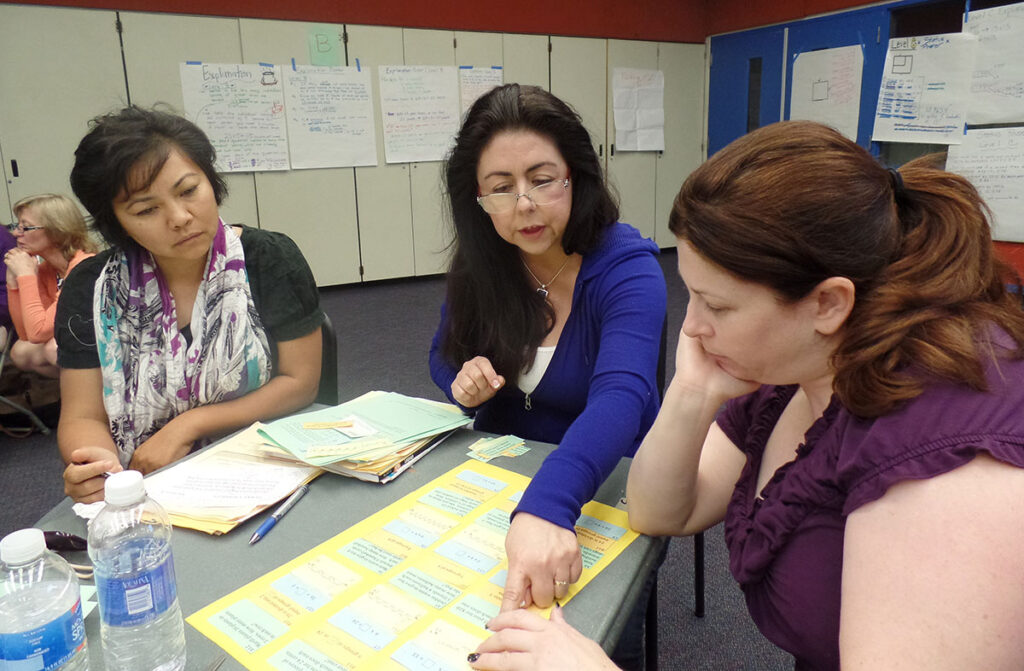Federal government backs state’s plan to improve teacher quality
 Sarah Tully, EdSource
Sarah Tully, EdSource
Teacher Estela Guzman, center, points to math issues as teachers My Lu and Tricia Cummings wait on during a professional development session in Santa Ana Unified School District on June 25, 2015.
 Sarah Tully, EdSource
Sarah Tully, EdSource
Teacher Estela Guzman, center, points to math issues as teachers My Lu and Tricia Cummings look on during a professional development session in Santa Ana Unified School Commune on June 25, 2015.
California officials will work to improve training, assessments and support for teachers under a plan canonical by the U.S. Department of Education to brand sure all students accept admission to qualified educators.
On Thursday, the department approved plans submitted past the Commune of Columbia and 17 states, including California, as part of its Splendid Educators for All Initiative.Terminal month, the department approved plans for sixteen other states.
In July 2014, the department launched the initiative by request states to create plans to ensure students – specially depression-income and minority students – have effective teachers. Department enquiry shows that schools with big numbers of depression-income and minority students tend to apply more than teachers who are less experienced or are not fully credentialed. Nationally, black and American Indian students are iv times as likely equally white students to exist in a school with more than twenty percent beginning-yr teachers, while Latino students are three times as likely to be in such schools, co-ordinate to the department.
"All students should take access to excellent teachers. That's a matter of simple fairness," said Tom Torlakson, state superintendent of public instruction, in a statement. "This plan details California's efforts to make sure students from depression-income families and students of color have the same access to experienced and qualified teachers every bit other students. I'm pleased the federal government has canonical the plan."
"All students should have access to excellent teachers. That'due south a matter of unproblematic fairness," said Country Superintendent of Public Instruction Tom Torlakson.
California'due south proposal, submitted in July, details the credential statusof teachers in schools with big numbers of low-income and minoritystudents. In 2013, 98 pct of the country's 288,239 teachers had full credentials.
Although well-nigh teachers are fully credentialed, less experienced teachers are slightly more concentrated in schools with large populations of low-income and minority students, according to the state'south inquiry.
In schools with large low-income educatee populations, about x.6 per centum of teachers had less than two years of teaching experience, compared to nigh 8.2 percent in schools with few depression-income students. The state's programme refers to the difference between the 2 as an "equity gap" – in this instance two.iv pct – that information technology will try to reduce.
The numbers were similar in schools with large minority student populations. About x.two percent of teachers had less than ii years of feel in those schools, compared to nearly viii.6 percent in schools with fewer minority students. The gap is 1.6 pct.
Educators discussed the "relatively small size of the equity gaps" during meetings about the result in June. All the same, the plan must address how to narrow those gaps.
The program outlines efforts to address disinterestedness gaps through the Local Command Funding Formula, or LCFF, which directs funds to low-income, English learner and other educatee groups.
The programme includes the land's intent to: change its teacher assessments to show that teachers are prepared to instruct the Common Corestandards, gather information well-nigh the quality of instructor-preparation programs, make sure teachers know about students' cultures and amend programs to assist new teachers.
States must runway and publicly report progress on their plans. California's program sets an annual timeline for its goals through 2016-17.
"All parents understand that strong education is key to strong opportunities for their children," said Arne Duncan, U.S. secretary of instruction, in a argument. "We as a country should treat that opportunity as a right that every family has – regardless of race, ethnicity or national origin, nada code, wealth, or first language."
To become more reports similar this one, click here to sign up for EdSource'due south no-cost daily email on latest developments in teaching.
Source: https://edsource.org/2015/federal-government-backs-states-plan-to-improve-teacher-quality/89355
0 Response to "Federal government backs state’s plan to improve teacher quality"
Post a Comment